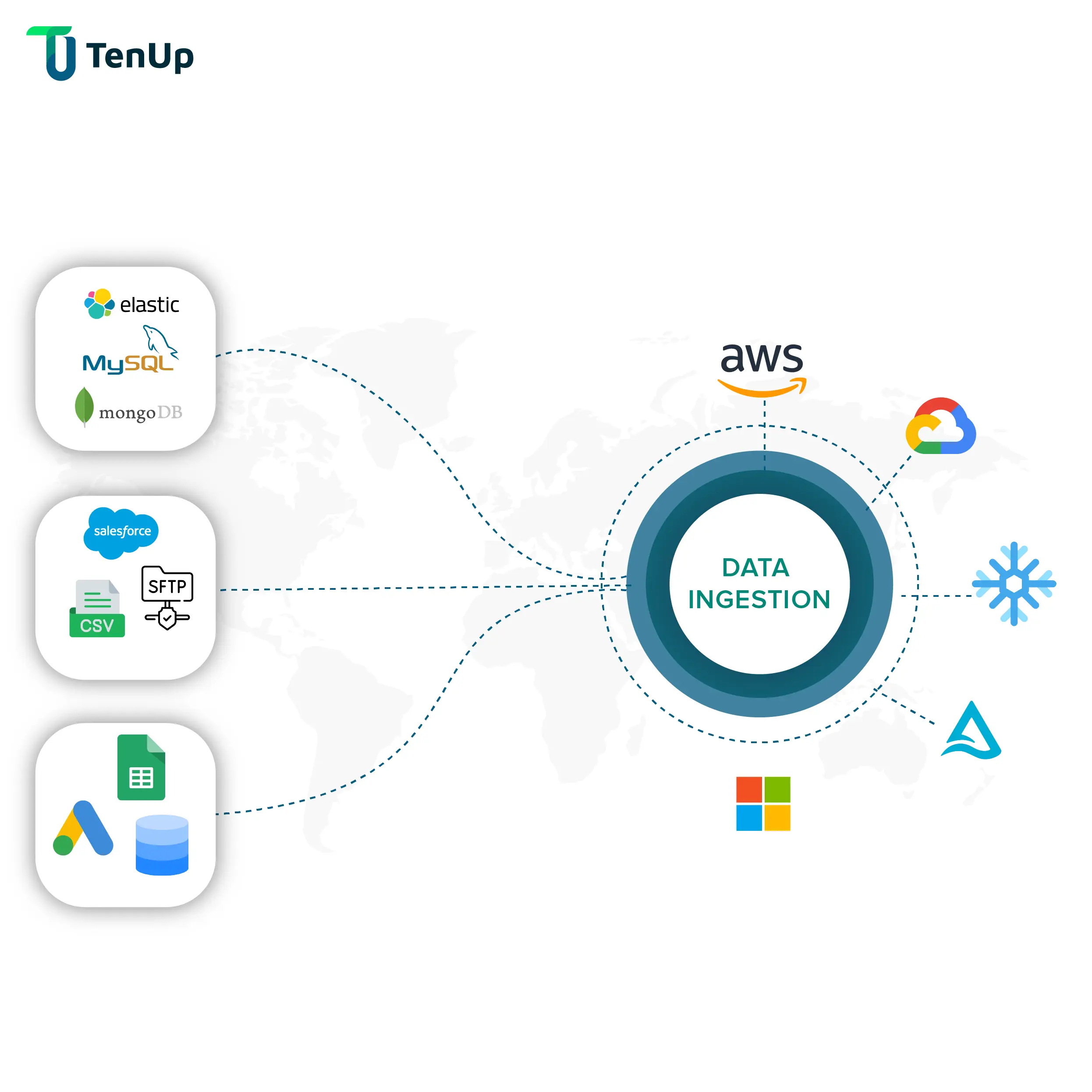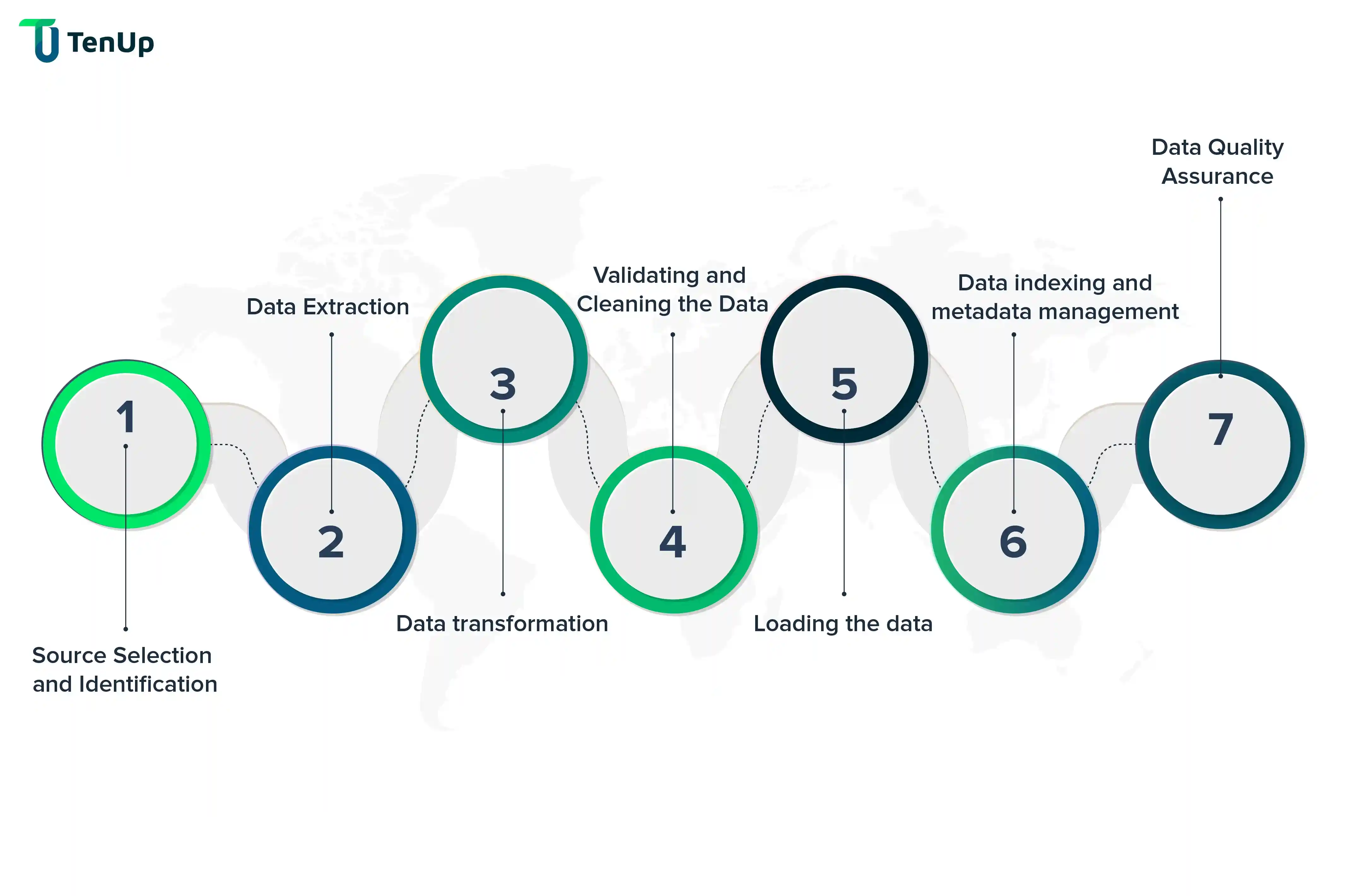#DataEngineering#Pipelines
Data is king in the world of decision-making. Effective leaders are aware that using data effectively is crucial to making wise decisions and producing significant results for their organizations. Data intake, however, is a key step that leads the way from raw data to actionable insights. Any project that uses data will succeed if this method is followed. In this post, we'll look at the factors that make data ingestion essential for generating insightful information and facilitating wise decision-making.


Data ingestion is the systematic process of collecting, importing, and integrating structured and unstructured data from multiple sources into a centralized repository, such as a data warehouse or data lake. This critical step ensures seamless data flow, enabling accurate analysis, real-time insights, and data-driven decision-making for businesses. Data must be extracted from multiple structured and unstructured sources, formatted according to industry standards, and then loaded onto a platform for analysis or storage. Making the data accessible, organized, and analysis-ready is the aim of data ingestion.
ETL (Extract, Transform, Load) and ELT(Extract, Load, Transform) are frequently used data ingestion and processing approaches.
Extract: Data is acquired from a variety of sources, including streaming platforms, databases, files, and APIs. Unstructured data from social media, site logs, or sensor devices can be combined with structured data from databases, spreadsheets, or CRM systems.
Transform: The extracted data is checked for accuracy and consistency before being transformed. This process guarantees the consistency, standardization, and interoperability of data from various sources. Processes like filtering, aggregation, normalization, or enrichment may be used in data transformation.
Load: The converted data is put into a central repository, like a data lake or a warehouse. For decision-makers, this repository acts as a single source of truth that is simple to access and analyze.
Correctly implementing the ETL/ELT data pipelines and ensuring accuracy throughout the entire data ingestion process is essential for data management success. We’ve jotted down the following steps based on our experience and best practices:

The first step in the data import procedure is locating the right data sources. Examples of this include databases, files, APIs, streaming services, and external sources. One phase in the selection process is figuring out which sources are required for the analysis and decision-making goals.
Once the sources have been determined, the data extraction from each source comes next. Different extraction methods may be employed depending on the type of source, including API calls for web-based sources, file parsing for structured files, or SQL queries for databases. The goal is to collect the raw data so that it can be processed further.
After extraction, the extracted data frequently needs to be changed and standardized. The data is cleaned in this procedure by getting rid of any errors, omissions, or duplicates. In order to guarantee consistency across sources, it could also include reformatting the data in accordance with a common schema or data model. Examples of transformation include data normalization, aggregation, filtering, and enrichment.
Data validation and cleaning are necessary steps to guarantee data integrity and quality. It comprises checking the changed data for errors and anomalies, and verifying the ingested data for better quality. Validation and cleaning may involve checking data types, removing duplicate records, resolving inconsistencies, validating data ranges, or applying business rules to assure data accuracy and quality standards.
After being extracted, transformed, and validated, the data is ready to be imported into a centralized storage system or data repository. The loading process entails inserting the data into the final storage, which could be a database, data lake, or warehouse. Loading can be done in batches or in real-time, depending on the requirements and capabilities of the system.
Effective data retrieval and analysis depend on managing metadata and indexing. Building indexes or other data structures that enable quick searches and queries on the data is referred to as indexing. Metadata management involves gathering and preserving details about the data, such as its source, structure, and context, in order to provide pertinent insights and analysis.
A continual process of data quality verification is used in the data input pipeline. It comprises monitoring the accuracy of the ingested data, conducting regular audits, and implementing fixes for any issues that may arise. This ensures the accuracy and dependability of the data used to inform choices.
Data ingestion is important for a number of reasons:
Accessibility and Consolidation: Data ingestion establishes a central repository where the data is easily accessible by fusing data from several sources. By removing the need for decision-makers to manually gather data from numerous sources, it saves time and effort. By combining data, ingestion allows a thorough picture of the company's activities, clientele, and market trends.
Data ingestion: Integrating different datasets and obtaining comprehensive insights are made possible by data ingestion. It combines structured and unstructured data from several sources to provide decision-makers with a comprehensive knowledge. Integration shows links, patterns, and correlations that could otherwise go undetected when analyzing data independently.
Data Accuracy and Consistency: Data accuracy is ensured by integrating data into a centralized repository, which also reduces the likelihood of discrepancies resulting from merging diverse data sources. Data accuracy is increased by data input standardization and cleansing processes, leading to more reliable insights and well-informed decisions.
Scalability and Real-time Analysis: Data ingestion facilitates the management of massive volumes of data including real-time streaming data. Organizations benefit from enhancing their data analysis capabilities as their needs grow. Real-time data entry facilitates prompt analysis and decision-making, enabling organizations to respond more quickly to evolving market conditions.
Historical Analysis and Predictive Insights: By utilizing historical data, organizations can perform retrospective analysis, identify trends, and learn from the past. Incorporating real-time data also makes predictive analytics possible, which helps businesses by anticipating customer behavior, predicting future trends, and improving business plans.
Better Decision Making: Data intake has provided decision makers with a consistent, reliable, and comprehensive stream of data. It gives them the information they need to make informed decisions, minimize risks, and seize opportunities. The efficacy of operations, customer happiness, and competitive advantage are all improved by making decisions based on data.
Compliance and data governance: Data entry is crucial for ensuring rules and data governance standards are followed. By centralizing data in a controlled environment, companies may implement data governance controls, protect data privacy and security, and adhere to regulatory requirements.
By ensuring that different data sources are unified through data ingestion, data integration tools take this a step further to guarantee the insights are accurate and aligned. Discover the benefits and challenges of data integration for successful data management.
Although data input is important, companies frequently encounter the following difficulties when attempting to transform data into useful insights:
Businesses can use a number of best practises to solve the difficulties posed by data ingestion:
Data Governance: Clear data governance policies and procedures must be established to guarantee data quality, integrity, and compliance throughout the intake process.
Data Integration Tools: Use contemporary platforms and solutions for data integration that provide comprehensive data transformation and purification capabilities as well as easy connectivity with a variety of data sources.
Automation:By automating data ingestion procedures, the chance of human error is decreased and productivity is increased. Routine chores, data validation, and scheduling can all be handled by automated processes, freeing up resources for higher value-added operations.
Companies can use data to inform decisions by implementing efficient data ingestion practices:
Enhanced Insights: Data ingestion makes it possible to integrate numerous datasets, giving a thorough picture of corporate operations, consumer patterns, and industry trends. Decision-makers can spot patterns, trends, and opportunities as well as receive insightful information.
Real-Time Decision Making: Organizations may access and analyze data as it is generated thanks to real-time data input capabilities. This enables decision-makers to act promptly and proactively, adapting to shifting market conditions.
Predictive analytics: Organizations can use predictive analytics models to forecast future trends, anticipate customer behavior, and optimize business strategy by absorbing historical and real-time data.
The importance of data ingestion for sound decision-making cannot be overstated. It serves as the basis for obtaining priceless insights and producing important outcomes for businesses. TenUp, one of the reliable Data Ingestion solution providers, is an example of how it may facilitate and enhance the data intake process.
Organizations can overcome the difficulties of data input and maximize the potential of their data with Tenup's powerful Data Engineering capabilities. By streamlining the intake procedure, it guarantees data accessibility, correctness, and consistency. As a result, decision-makers can rely on a trustworthy and extensive data foundation to support strategic initiatives and help them reach their business objectives.
Tenup serves as a reliable partner in the dynamic and data-driven business environment, enabling organizations to fully utilize their data through smooth ingestion and integration. Check out the case study titled, “Enhancing Warehouse Management for a Leading Private Equity Firm in the UK”. TenUp helps organizations to unleash the potential of their data, acquire a competitive edge, and confidently travel the road to success.